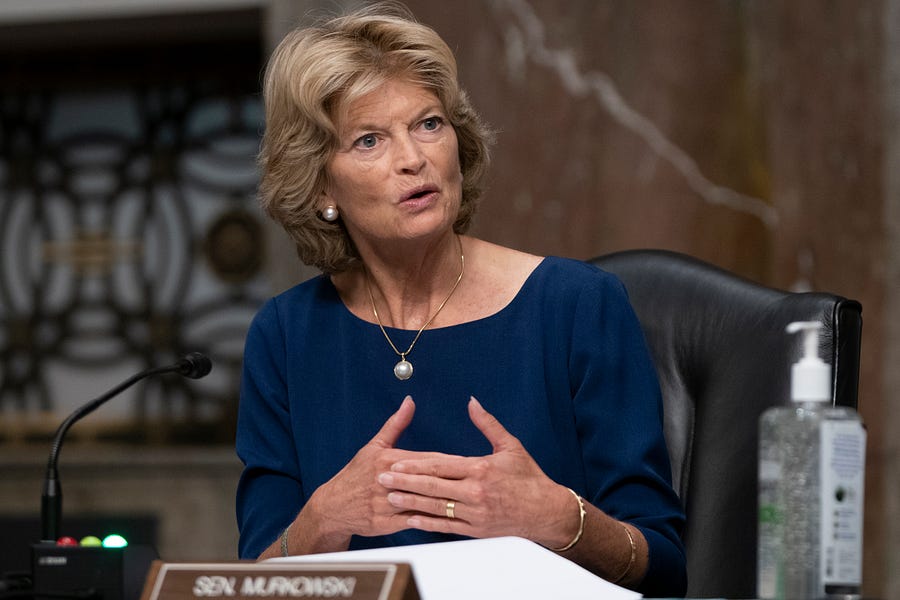Campaign Quick Hits
Another Day, Another Memo: Congressional Leadership Fund President Dan Conston released a memo about how the GOP can win back the majority in 2022. The Kevin McCarthy-blessed Super PAC, which is the largest House super PAC in history (a bit of a chuckle since super PACs have only existed for 10 years), spent $140 million in 2020, helping Republicans flip 15 seats and reelect every incumbent “for the first time since 1994.”
So what’s the plan for 2022? First up is candidate recruitment. The memo notes that “all 15 of the seats Republicans flipped were won by a woman, a minority or a veteran.” Conston also wants to prioritize fundraising, writing that the “single biggest threat to Republicans taking back the Majority is insufficient candidate fundraising.” Too few of their candidates invested in building sufficient fundraising programs, relying too heavily on outside groups to swoop in and rescue them. Redistricting is listed as a net plus for Republicans—as it no doubt will be with the GOP controlling more than 60 percent of state legislatures. CLF is bullish about its chances in the suburbs in 2022, noting that “Republicans won 18 of the 25 suburban districts CLF invested in” and that “19 out of those 25 GOP candidates” outperformed Trump, including 11 who outperformed him by “over 5 percent.”
This is a memo geared toward reporters and potential donors, but if the GOP can be less like the carnival at CPAC last weekend and instead follow Conston’s lead—especially on candidate recruitment—I’m at least tentatively persuaded.
Downstream of Redistricting Delays: I noted earlier this month that states wouldn’t know how many congressional seats they would each have until April 30, per the Census Bureau. But in some ways, that’s the least of it. Now they’ve been told that they won’t have their block-level data—the information they actually need to be able to draw any new lines, which is data they normally have on March 31—until September 30. A 6-month delay has all sorts of domino effects. First, the March 31 deadline isn’t a suggestion: It’s in the law. Plucky Ohio just went ahead and filed a lawsuit demanding the data by the codified deadline. Second, several state constitutions—including those of Colorado and California—require maps to be drawn before states will even receive the data this year. Third, without even preliminary maps—let alone the completion of the litigation that inevitably follows—candidates are getting squeezed. Illinois, Texas and North Carolina usually have March primaries “and with Illinois on track to lose a seat, North Carolina gaining one and Texas slated to gain as many as three, all maps will change significantly, too.” Does everything move back six months except Election Day?
The Rise of the Politically Unaffiliated: Gallup has been asking Americans whether “you consider yourself a Republican, a Democrat or an independent” since 2004. While it wasn’t unusual in the bygone era of 2004-2006 to see the percentage of self-identified independents in the 20s, those days are long gone. The number has routinely hovered in the 30s as late as November of last year but had never hit above 47. As of this month, independents have hit an all time high—50 percent of those surveyed. Not surprisingly, Gallup also found another record breaker: 62 percent said the “parties do such a poor job representing the American people that a third party is needed.” No, this doesn’t mean that the Bull Mooses are coming back, but it may mean that candidate recruitment will matter just that much more when partisan affiliation is no longer a voting shortcut for half the country.
Stirewalt’s By The Numbers
$70,000: The share of New York Gov. Andrew Cuomo’s 2022 re-election fund of more than $16 million donated by longtime supporter Bernard Schwartz. But no more, at least for now. Schwartz was just one of the Cuomo backers who told CNBC that he was cutting the governor off unless and until the claims of sexual harassment against him were resolved. Said one finance bro of Cuomo’s bid for a fourth term: “Everything is on hold.”
75: The estimated number of the 211 House Republicans who attended an immigration policy talk by former White House adviser Stephen Miller, according to Politico. The event was organized by Rep. Jim Banks, R-IN, the new chairman of the Republican Study Committee. Banks told Politico: “What I want to do with the RSC for the next couple of years is really make the Trump legacy and the Trump platform the platform of the Republican Party and the conservative movement of the future.”
123: The number of new, final regulations enacted by the executive branch in the previous week. According to the Competitive Enterprise Institute, the administration is on track to issue 3,372 new regulations this year—only 19 more than in the final full year of the Trump administration. The Federal Register, which records all of the regulations, is on pace to shrink by more than 7,000 pages compared to 2020, tracking toward a svelte 80,034 page count.
$44 million: The amount West Virginia expects to get from new Biden administration mine reclamation grants, according to Roll Call. The money is flowing through the Department of the Interior. The announcement came after West Virginia’s senior senator, Joe Manchin, withdrew a threat to kill the nomination of Rep. Deb Haaland, D-NM, to lead the department.
6,000: The estimated number of workers at an Amazon facility in Bessemer, Ala. who will vote on whether to organize as part of the Retail, Wholesale and Department Store Union. President Biden lent his support to the effort in a video on Sunday. They would be the first of Amazon’s approximately 400,000 American employees to be unionized.
4: The number of candidates who St. Louis voters can select for mayor in today’s municipal election. The city is trying out the nonpartisan “approval voting” format in which voters may select as many of the candidates they like, even all four names on the ballot. The top two finishers will face off in a general election later this year. St. Louis is only the second city to try the method—Fargo, North Dakota became the first last year. Proponents say it is a simplified version of the ranked-choice approach.
Lastly but bestly [Editor: We’ll let it pass this time], lots of y’all have asked for a deeper look at types of voting—ranked choice, multi-member districts, etc.—and we here at The Sweep are nothing if not obliging. Well, Charlotte is, at least.
What If It Wasn’t A Binary Choice?
When New York City voters take to the polls in June’s mayoral primaries, they’ll be presented with the option of ranking their top five candidates to fill their party’s ticket. Ranked-choice voting, though more difficult to conceptualize than traditional plurality voting systems, has taken hold in municipalities across the country for its ability to—in theory—select the candidate backed by the broadest consensus.
So how do different voting methods yield unique electoral outcomes? While the United States had traditionally relied on a winner-take-all vote, election experts have put forth a variety of strategies designed to mitigate unwanted election outcomes. Many have already been incorporated into our voting systems.
The likelihood of a bad outcome varies under different systems, but the inadvertent selection of an unpopular candidate by voters hoping to improve their preferred candidate’s chance is most likely to occur in voting systems with limited choices.
Let’s start with the norm. Nearly every state, with a few exceptions, selects the candidate with the greatest number of votes for most offices. Under the plurality vote, a voter’s second choice is taken into as much consideration as their tenth choice—which is to say, not at all. These races are the easiest for pollsters to gauge, but they’re also the most susceptible to tactical voting, which ups the likelihood of paradoxical outcomes.
In the case of party primaries utilizing a plurality system, the “winner” in “winner-take-all” often skews far to the left or right as a result. Larry Diamond, former director of the Center on Democracy, Development, and the Rule of Law at Stanford University, explained to The Dispatch that low voter turnout combined with a “first-past-the-post” voting method creates a “perfect storm for polarization” as state primary outcomes are dictated by as little as 8 percent of the electorate and moderate voters are discouraged from voting third-party.
“The method doesn’t respect the voters’ second, third, and fourth-ranked candidates,” said Don Saari, author of Decisions and Elections and mathematics professor at the University of California, Irvine. Drawing an analogy to the academic world, Saari explained that the plurality system is akin to a situation in which universities quantified student success only by As received, not accounting for Bs, Cs, Ds, and Fs. The failure of this algorithm is that it allows students with both several As and several Fs to outflank students with more consistent scholastic achievement.
The same comparison applies to ranked-choice, in which plurality is the driving metric despite the voting system’s deference to preferential ballots. In the case of New York City, votes are first tallied by first choice. If no candidate wins a simple majority (highly likely in a field of at least a dozen serious Democratic contenders), the candidate with the fewest votes is eliminated. If your first choice is eliminated, your votes are then transferred to your second choice. The process continues until a candidate surpasses 50 percent of the vote.
The method is sometimes also referred to as “instant-runoff voting,” because like the two-round system, the election requires a certain threshold of votes to trigger a victory. Unlike the runoff system, the criteria necessary to get a candidate past that threshold are built into the first ballot voters complete.
“The problem with a runoff election is it asks a lot of voters to come back later and vote all over again. Ranked-choice voting enables all votes to be counted right there at the same time,” Diamond explained. “You can program a voting machine very simply to do these ballot transfers if no one gets a majority.”
According to the New York Campaign Finance Board, “cities that have implemented Ranked Choice Voting have elected more women and more women of color, making their elected officials more representative of their communities.” In addition to promoting diversity in elected office, ranked-choice also seeks to minimize negative campaigning, lessen the spoiler effect, and broaden public approval of the elected candidate.
Primarily for the latter two reasons, Maine became the first state to implement ranked choice in a statewide election after Republican Gov. Paul LePage twice won office with less than a majority of the vote. Alaska also adopted a form of preferential voting in a November voter initiative, eliminating the party primary in favor of a blanket primary that advances the top four finishers to the general election, which then uses ranked-choice voting to select a candidate.
“There could be two Republicans, a Democrat, a Green Party candidate, a Libertarian, somebody from Mars, and somebody from Venus,” said Diamond, adding that the system afforded Sen. Lisa Murkowski the political flexibility to convict former President Trump because she no longer needs to beat out a Trump-endorsed candidate in the party primary (and is likely to have broader appeal in the ranked-choice general election).
Another alternative is to create multi-member districts. Proportional ranked-choice voting, introduced under the recent Fair Representation Act, is designed to lessen the effects of gerrymandering and diversify the geographical spread of political party representation. But by selectively upping the number of congressional seats in districts across the country, this system results in a very low percentage threshold necessary to be elected to federal office.
“If you have a district size of one person, then you only need to win 50 percent plus one. If you have a district size of three members, then you only need logically to win 25 percent of the vote plus one,” Diamond said. So to be elected a five seat district, candidates only need to pull one-sixth of the vote plus one. While this could help moderate Republicans win office in deeply blue states and vice versa, it may also have the adverse effect of advancing radical candidates.
The method most effective at eliminating negative outcomes, Saari argues, is the largely untried Borda count. As with ranked-choice and proportional ranked-choice voting, voters list their candidates in order of preference. But instead of relying solely on plurality, the Borda method assigns value to candidates according to their places on each ballot.
The clearest parallel is to how colleges and universities calculate GPA. Candidates get 1 point for last place, 2 for next-to-last, and additional points in ascending order. The substantive outcome: voters select the least divisive and most widely-accepted candidate, allaying partisanship and infusing nuance into the picking process. “It captures the information from paired comparisons with less work and fewer things that can go wrong. It can be proved that it is the method that is the least likely to give you paradoxical outcomes,” said Saari, who worked on the mathematical proofs to back the method.
“I think our worst villain is the voting system, because it throws away valued information about who the voters want,” Saari added. “I strongly believe in a ranked voting system to try to recapture what it is that the voters want, but if you’re using plurality at each stage in a ranked-choice voting system you’re throwing away valuable information.”
Correction, March 2, 2021: An earlier version of this newsletter misstated the name of the Congressional Leadership Fund.









Please note that we at The Dispatch hold ourselves, our work, and our commenters to a higher standard than other places on the internet. We welcome comments that foster genuine debate or discussion—including comments critical of us or our work—but responses that include ad hominem attacks on fellow Dispatch members or are intended to stoke fear and anger may be moderated.
With your membership, you only have the ability to comment on The Morning Dispatch articles. Consider upgrading to join the conversation everywhere.